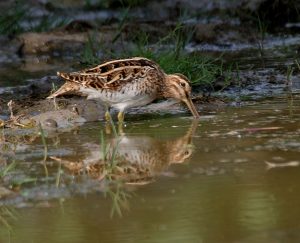 Growing up, Virginia Hall led a charmed life. She spent summers in Europe and on the family’s 110-acre Box Horn farm on the outskirts of Baltimore. She went to the exclusive Roland Park Country School for Girls, then Radcliffe and Barnard. After graduating from the consular Academy in Vienna, Austria, Virginia began working as a clerk for the US State Department with an assignment in the US Embassy in Warsaw, then the US Consulate in Izmir, Turkey. Virginia was ambitious and even though only a handful of women were Foreign Service Officers, she planned to take the Foreign Service examination to advance her career. Everything was falling into place.
Growing up, Virginia Hall led a charmed life. She spent summers in Europe and on the family’s 110-acre Box Horn farm on the outskirts of Baltimore. She went to the exclusive Roland Park Country School for Girls, then Radcliffe and Barnard. After graduating from the consular Academy in Vienna, Austria, Virginia began working as a clerk for the US State Department with an assignment in the US Embassy in Warsaw, then the US Consulate in Izmir, Turkey. Virginia was ambitious and even though only a handful of women were Foreign Service Officers, she planned to take the Foreign Service examination to advance her career. Everything was falling into place.
On December 8, 1933, it all changed. Virginia was hunting the Gallinago on the marshy shore of Turkey’s Gediz peninsula, when her rifle slipped and discharged, severely injuring her left leg and foot. A portion of her leg below the knee was amputated when gangrene set in.
The State Department had strict rules forbidding applicants with amputations from entering the Foreign Service. Virginia was furious and fought this form of discrimination against the differently-abled, but her appeal was rejected by then-Secretary of State Cordell Hull. This set into motion Virginia’s eventual departure from the State Department and likely fueled her determination to join British Intelligence and the fight in France.
The Gallinago, also known as Snipe, is a marsh-dweller related to the Sandpiper and Woodcock. It’s most often hunted after dark. Popular in Europe, the Gallinago is a dark-meat bird with a flavor more mild than Duck. (Photo courtesy of J.M.Garg – Own work, CC BY-SA 3.0, https://commons.wikimedia.org/w/index.php?curid=2974875)
To see photos and learn more about Virginia’s life of espionage, click here: Virginia Hall blog.
Craig Gralley’s book, “Hall of Mirrors— Virginia Hall: America’s Greatest Spy of WW II,” has been called:
“Riveting . . . A tremendous read!”—Gen. David Petraeus (USA, ret.)
“An extraordinary accomplishment . . . A stunner!”—Peter Earnest, Founding Exec. Director, International Spy Museum
“Enthralling!”—Sarah Megan Thomas, Actress/Producer, “Liberte: A Call to Spy.”

Thanks for the background about the gallinago or snipe. Have you eaten it, or wherever did you find the statement that it tastes “milder than duck”?
However, I wonder about Virginia’s gun. If she was hunting a wading bird, perhaps especially if late in the evening or even at night, wouldn’t she have used a shotgun, rather than a rifle?
Also, I find it amazing that her appeal actually would have reached Secretary Hull. Of course, I would assume that was long before the FS Grievance Board, but what process or venue was in place, and how did you find out? 7/13/2018
Hi Doug– Thanks for your note. I haven’t eaten Gallinago but in researching Virginia’s story I reviewed a number of recipes and taste reviews for snipe. Several made the comparison with duck, though I have to think Gallinago would still have to have a wild, gamey flavor. I agree with your observation about Virginia’s use of a shotgun rather than a rifle for hunting shorebirds–and a shotgun would have greater potential for creating a gangrenous wound. Finally, Virginia’s family had money and powerful friends that could push her case forward to Hull–even perhaps, circumventing a grievance board, if one existed. I found this information in a short, excellent, scholarly piece written about 20 years ago by CIA’s then Chief Historian, Gerald Haines, in the magazine of the National Archives. Again, thanks for writing and as I just retired, fully, I’ll have more time to devote to telling Virginia Hall’s amazing story.